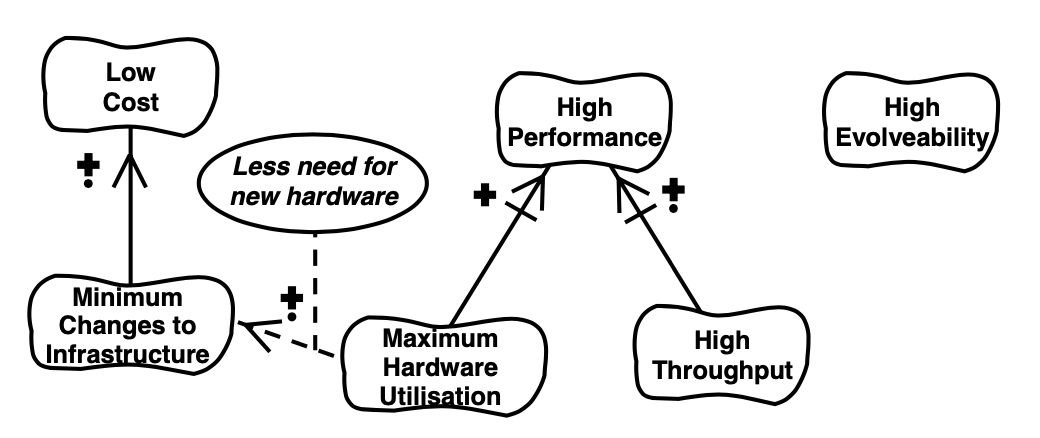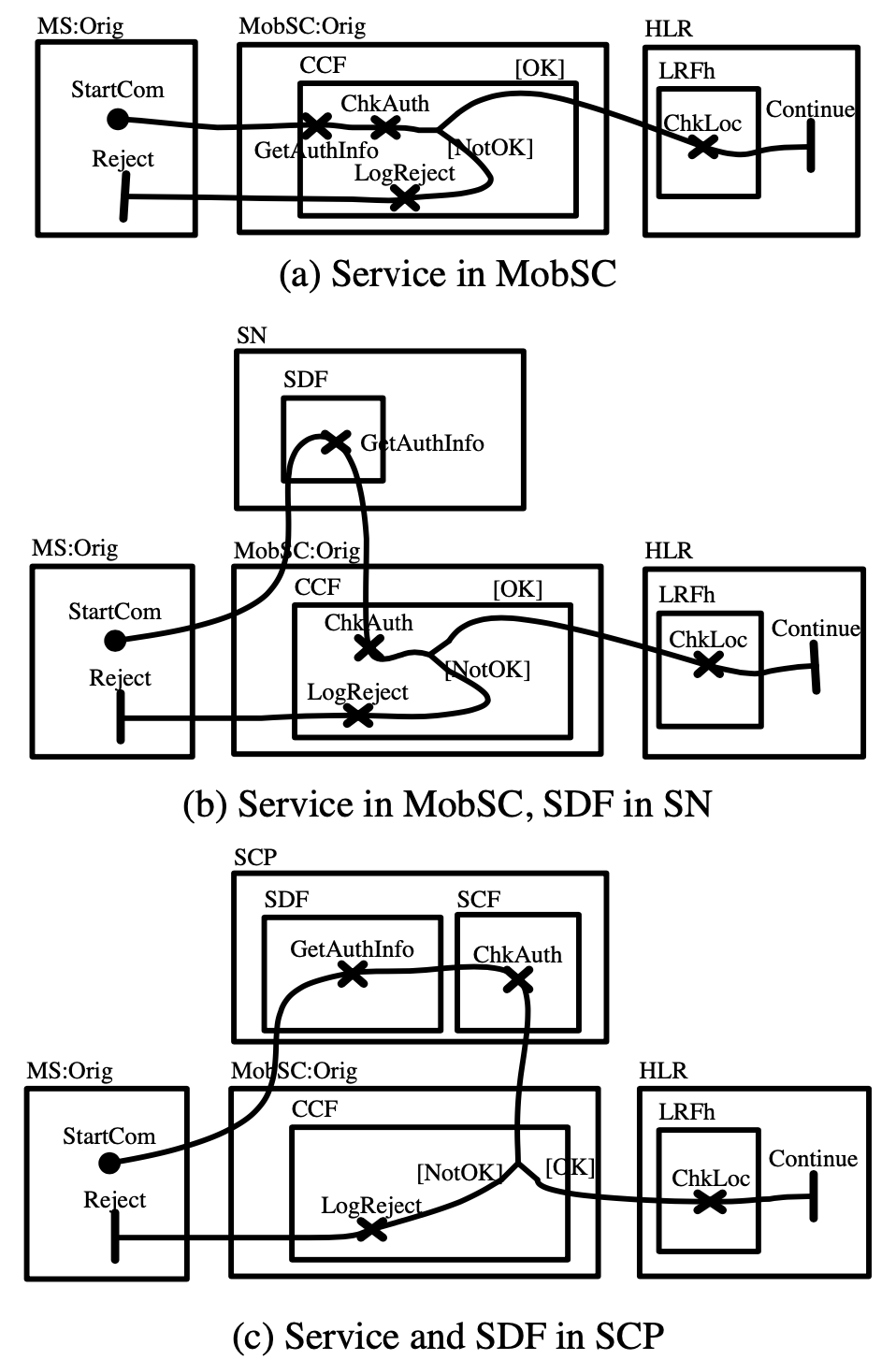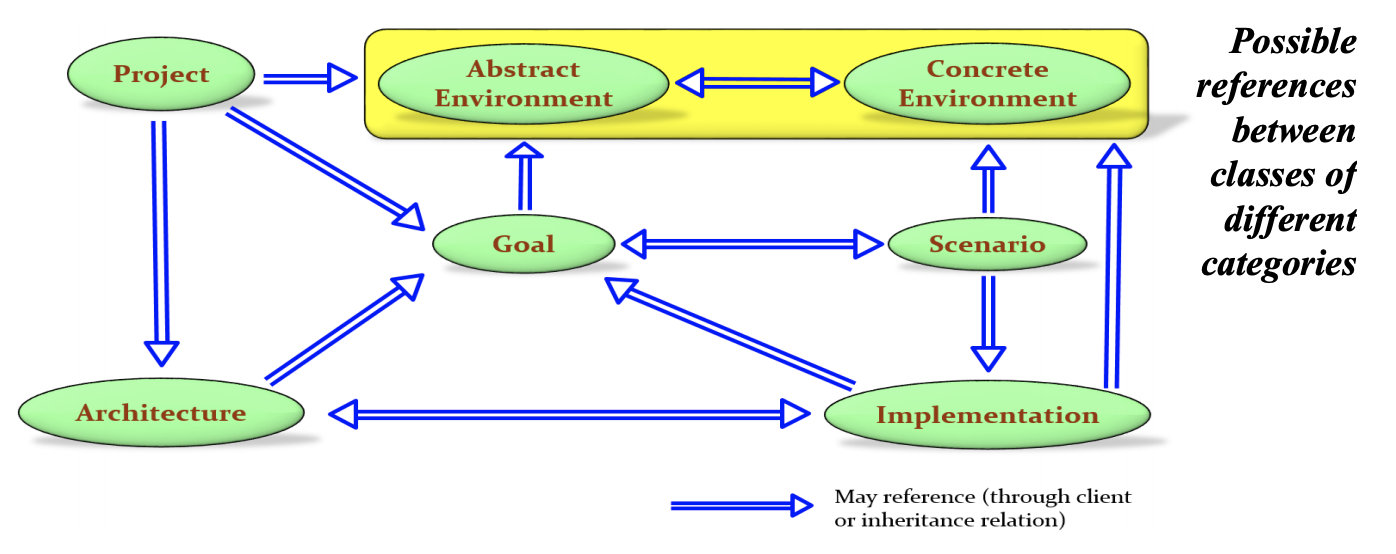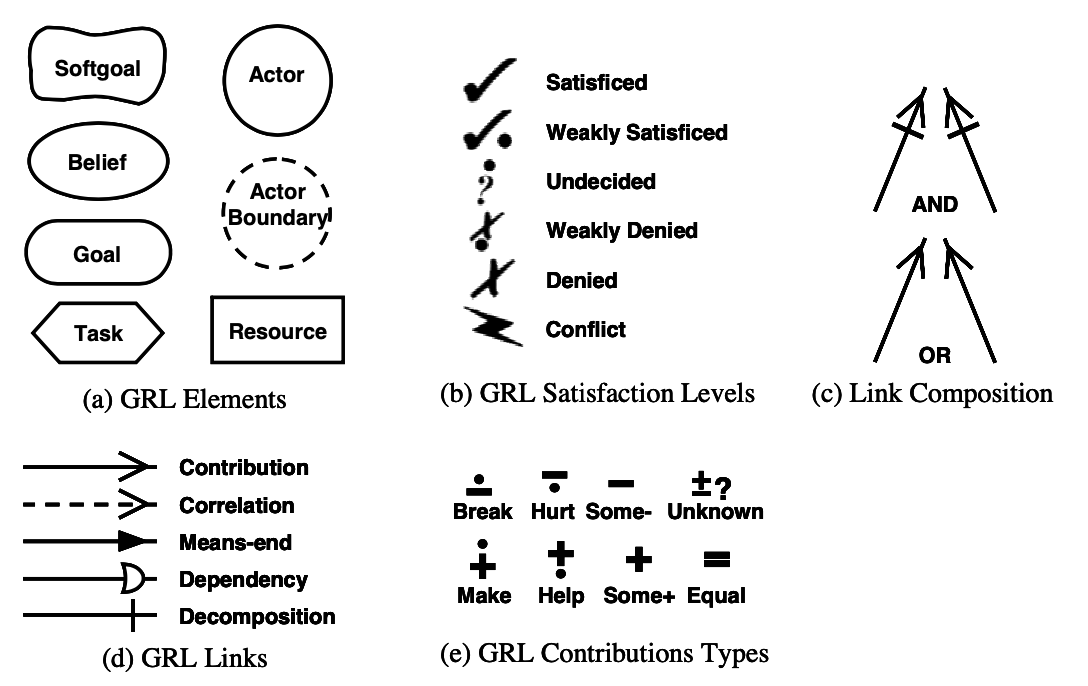Overview of URN
-
Daniel Amyot, U. of Ottawa

-
ITU-T (Telecom) standardization process
Principles
-
User vs. Systems requirements
-
Several notations:
-
GRL (Goal-oriented Requirement Language)
-
UCMs (Use Case Maps)
-
-
Graphical syntax
Capabilities
-
Capture user requirements
-
Scenarios as 1st class entities
-
Focus on elicitation and transition to design
-
Allocation of scenario responsibilities to components
-
Detection/reasoning of features
-
Address goals and NF requirements
-
Formal grammar (supports transformations and exchanges)
GRL

A goal is an objective or concerned used to discover and evaluate requirements.
Basic concepts
- Goals
-
business or system
- Alternative means
-
of achieving goals
- Rationales
-
for contributions and decisions
Basic notation

-
Softgoals (fuzzy goals)
-
Contribution link
-
AND composition
-
Impacts
-
Correlation
-
Belief
| More here. |
Impacts
-
positive/negative and sufficient (make/break)
-
positive/negative but insufficient (help/hurt)
-
unkknown positive/negative (some+/some-)
Benefits

-
Different level of abstractions
-
Tool supported
-
Trade-off analysis
Use Case Maps

A functional requirements is a requirement defining functions of the system.
Capabilities
-
UC capturing and elicitation
-
UC validation
-
High-level architectural design
-
Test case generation
Basic concepts
- Scenario
-
a partial description of system usage
- Responsibilities
-
scenario activities (something to be performed)
- Component
-
entity (software or not) that performs a responsibility

Basic notation
| More here. |
-
Start point
-
Pre-condition
-
Triggering event
-
Casual paths
-
Responsibilities
-
Fork
-
Condition
-
Endpoint
Benefits
-
UCMs can integrate many scenarios
-
To analyze potentially conflicting scenarios
-
To generate artifacts (MSCs, SD, test cases)
-
To analyze alternatives designs

Mapping with the Unified Framework
The 7 kinds of class
-
Requirements
-
Concrete Environment
-
Abstract Environment
-
Scenario
-
-
Design and implementation
-
Architecture
-
Implementation
-
-
Goals and project
-
Goal
-
Project
-
References between classes

Applied to URN
| Kind of class | URN Concept | Details |
|---|---|---|
Concrete Environment |
Actor, Resource |
|
Abstract Environment |
Actor Boundary, Belief? |
|
Scenario |
UCM Paths |
|
Architecture |
Out of scope |
|
Implementation |
Out of scope |
|
Goal |
Goal, Softgoal, Belief? |
|
Project |
Task, Resource? |

